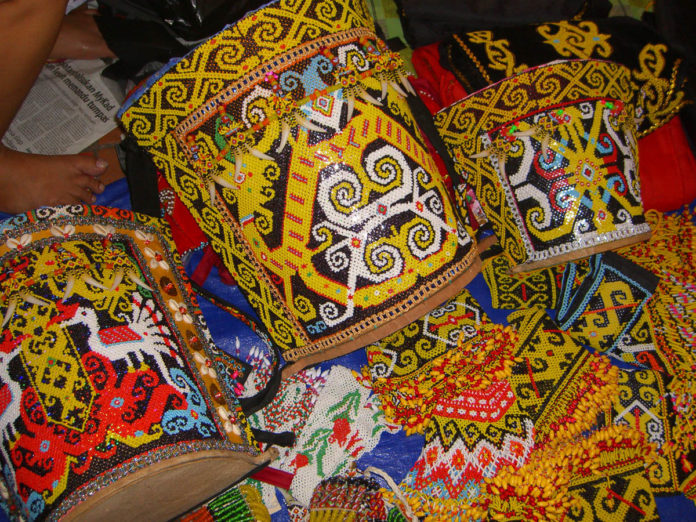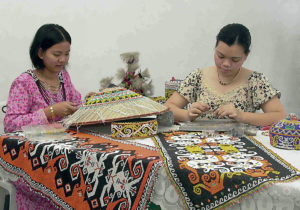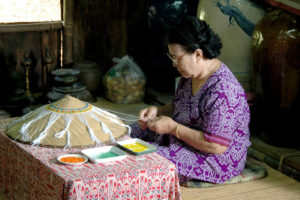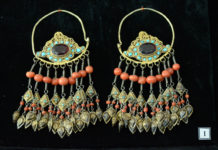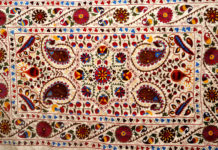The indigenous people of Sarawak have a long beadwork tradition as have the Nyonya (Peranakan) women of Peninsular Malaysia. “Bead embroidery”, which involves stitching beads on a fabric backing, is different from “beadwork”, which involves stringing and threading. The beaded slippers, purses and decorative hangings of the Nyonyas were stitched onto velvet or fine canvas attached to a frame, but to make an ornamental fringe or curtain, translucent pastel beads were strung on open, descending threads. Today, only beaded shoes in slipper form (kasut manik) are made in the Malay Peninsula.
In Sarawak, as elsewhere in Borneo, beads, being small-sized and thus “mobile” objects, were easy to disseminate along trade routes, and many indigenous groups, particularly the Orang Ulu of the interior, became connoisseurs of beadwork. Most traditionally wore beads and continue to do so, and many greatly prize them.
Beadwork is done almost exclusively with monochrome glass “seed beads”. Early sources were India (eighth century onwards) and China (tenth century). After European contact, both the volume and colour palette expanded. Today’s seed beads come mainly from Japan and Korea. The working thread, traditionally made of locally available organic fibres, is now cotton or silk.
Orang Ulu beadwork embellishes items of clothing, such as jackets, skirts, sunhats, caps, headbands, necklaces, ear hangings and belts, but also baby carriers and baskets. It is worked on descending threads, with two threads being fed through one bead at regular intervals to give the product stability. The worker usually follows a pattern that is traditionally incised on a wooden board, but nowadays cut from paper. Beadwork designs include the human face and figure, dragon and hornbill images, plant motifs or geometric patterns.
The Iban women of Sarawak make a bead yoke for festive wear. Worked as a net, the ends of the threads are secured with colourful wool pompons. Traditionally, red, yellow, black and white opaque glass seed beads were used. Modern fashion incorporates all the colours available, as well as glass crystal, gold, pearl and similar “jewellery” beads.
Most types of Sarawak beadwork are produced for the tourist trade and can be seen in souvenir and craft shops.


